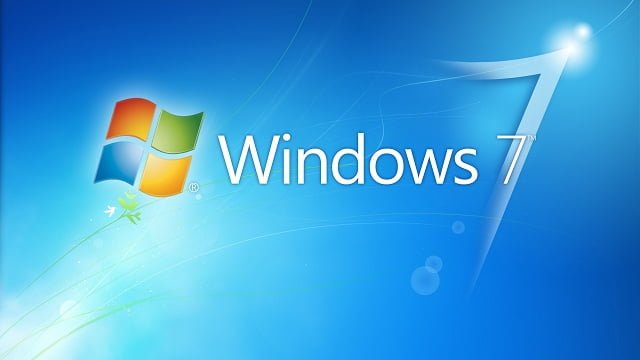Now we know that the Windows 7 is way faster than one of its predecessors the Vista, but there is always for improvement when it comes to technology. He reare various ways in which you can improve the speed and efficiency of your PCor Laptop device, which has the Windows 7 Operating System.
- Uninstall Bloatware
Simply uninstall the bloatware that came with your laptop or PC or even the applications that you installed and no longer require. You can do this by simply going to the control Panel then go to the Programs and once you get their ‘click’ the ‘Uninstall a program’ and execute whatever you think is surplus to your requirements, such as unwanted games, that you may never need. You can also use a software for the purpose of uninstallation such as PCDecrapifier and Revo Uninstaller.
- Limit the startup Processes
Now in the start button’s search box, type MSCONFIG,then simply move to the startup tab, you will most likely see a whole range ofapplications, most of which are for system support, but you can easily identifythe applications that clearly are not necessary for the operations on yourlaptop/PC. For example, there is absolutely no need to have the Google Update oreven the QuickTime running all the time on your Device. Moreover do not deletethe applications that support your hardware or security, but anything thatseems to be non-productive can get the execution!
Must Read: Android Pie Update Launched in the Xiaomi Mi A2
- Add More RAM
The Windows 7 has much of a hog as the Vista, but if you are looking to move from the XP version of windows, well than the memory requirements for that purpose is greater. You can simply add more Ram, but when it comes to upgrading your RAM the hardest part is not the installation of it but rather the research and shopping you will have to do to find the correct memory module.
- Turn off search indexing
In Vista I, would only do this if I saw the search indexing icon in the system tray and noticed a performance lag, but that notification isn’t present in Windows 7. Of course, if you do a lot of searching, this won’t appeal to you, as some searches will be slower. To turn off indexing, open the Indexing Options Control Panel window (if you just type “index” in the Start button search box, you’ll see that choice at the top of the start menu), click “Modify” and remove locations being indexed and file types, too. If you want to leave search indexing on, but find that it occasionally slows you down, you can stop its process when you need extra speed. Right-click on Computer either in the Start menu or on the desktop, choose Manage. Then double-click Services and Applications, then Services. Find Windows Search, and double click on that. From this properties dialog, you can choose a Startup type of Manual or Disabled to have the process silent by default.
- Defrag
You can Defragmentyour disk stores data in chunks wherever there’s space on disk, regardless of whether the space is contiguous for one file. Defragging tidies everything up and blocks a program’s bits together so that the reader heads don’t have to shuttle back and forth to read a whole executable or data file. While this is less of a problem with today’s huge hard drives and copius RAM, a slow system can still benefit from defragmenting the disk. Windows 7 comes with a built-in defragger that runs automatically at scheduled intervals. You can then either change the scheduled defrag, or defrag on demand. Moreover simply type ‘Defrag’ in the Windows Start Menu search bar, and the click on the “Disk Defragmenter”. This version of the utility is improved on the Windows 7 and hence shows us more information about what happens on your dish than the previous Vista version did.
- Change the Power Settings
Now by simply doing this you can boost your computing experience but it will not be quite saving on your electricity bill however if you are using a PC that is. Simply go to the Control Panel and select the System and Security. From there you will see some options out of which you have to select the ‘Power Options’ . From here you can click on the left-panel choice “ Create a power option” and you can choose the ‘High Performance’ option.
- Clean up Your Disk
Now from the Start menu, choose All Programs, Accessories, System Tools and finally the Disk Cleanup. This will help you find the unwanted junk and the files such as the temporary, offline Web pages and the installer files on your PC and this will offer to delete them all at one time. This will in turn help you have a relatively noticeable affect on the speed on your device.
- Check for Viruses and Spyware
So for thispurpose, you can run the built in Windows Defender or you could also use athird party application such as the “Spyware Doctor with AntiVirus 2010” but ifyou do not want to pay any sum of money for this purpose, there are also manyapplications such as ‘Avg Antivirus’ or the ‘Avast AntiVirus’ availaible fordownload.
Must Read:
- Performance TroubleShooter
Now in the Control Panel’s search box if you type “troubleshooting” you will see choice “Check for performance issues” under the System and Security. Simply Run this TroubleShooter and it may help you find the cause for the slowdown of operations on your device.
- Turn Off the Desktop Gadgets
Now we come to the tips that require shutting down some of the operating system’s bling. Windows 7 ditched the actual visual sidebar of Vista, but there’s still a sidebar process running. Turn it off by typing “gadgets” in the start menu search bar, choosing “View list of running gadgets” and select each in turn and click Remove to shut any gadgets you can live without.
- Do Not Use a Beautiful Desktop Background
Now sometimes change begins with the smallest of changes and well this is one of them! By not setting up a high resolution Desktop Background, this will help in freeing up extra Ram and therefore will boost the speed of your overall device somewhat. Right click on the desktop and choose ‘Personalize’ and then the ‘Desktop Background’ at the bottom of resulting window and finally set it up with a solid color.
Here are 12 Tips to Speed up Windows 7
- Turn Off the Aero Effects!
Simply go to the Control Panel’s Performance Information and Tools section, there you will find an option ‘Adjust the Visual Effects’ click it and you will see a whole array of effects which will seem very interesting to you, but simply choose the ‘Adjust for best performance’ and this will turn everything off.




